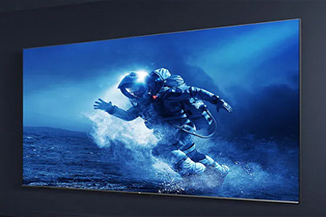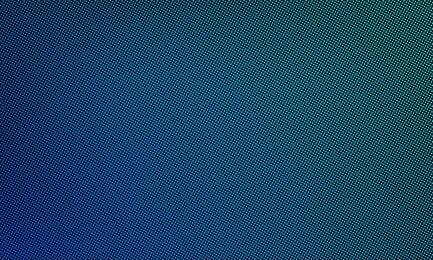Publisher: Supplier of LED Display Time: 2022-09-05 15:12 Views: 2688
Nowadays, the development of technology is getting faster and faster, and the current screen is divided into three types: LED, LCD and OLED. And which is better about LCD or OLED screen? It has always been a hot topic of discussion. Next, the editor of LCF will introduce you one by one.
1. What are LCD and OLED screens?
First of all, let's understand what LCD and OLED are?
LCD is the abbreviation of Liquid Crystal Display, which is called liquid crystal display in Chinese. LCD does not support self-illumination, needs a backlight, and can only emit white light. In order to project the three primary colors, it needs to be shaded with a layer of color filters.
OLED is the abbreviation of OrganicLight-Emitting Diode, which is called organic light-emitting semiconductor in Chinese. It is an organic self-luminous material with luminescent properties. When an electric current is passed through, these organic materials emit light in the three primary colors of red, green and blue. OLED can be further divided into AMOLED (Active Matrix Organic Light Emitting Diode) screen and Super AMOLED screen.

2. the difference between LCD screen and OLED screen
(1)Different effects
LCD has a backlight layer, which can emit light by refracting light, and the color saturation is not so high, so the display effect is more natural.
OLED can emit light by itself, and each pixel projects three primary colors of light, and the display effect is more vivid. However, since the OLED screen cannot guarantee the same light-emitting effect of each sub-pixel, it is prone to screen burn-in.
In terms of color gamut, the OLED LCD screen can display an infinite number of colors, and it is not affected by the backlight. The pixels are very advantageous when displaying a completely black picture. The color gamut of the LCD screen is currently in 100%. It is between 72 and 92 percent, while the color gamut of the LED LCD screen is above 118 percent.
(2)Different thickness
LCD screens are thicker and less flexible; OLEDs are thinner and more flexible, and can be flexible, bendable displays. Therefore, generally curved screen mobile phones use OLED screens.
(3)Contrast is different
Contrast ratio also means black appearance, which is the biggest disadvantage of LCD screens, because the liquid crystal layer cannot be fully closed, and when the LCD displays black, part of the light will pass through the color layer. So the black of the LCD screen is actually a mixture of white and black.
From the perspective of color performance, the look and feel of OLED is more inclined to rich and bright, while the display effect of LCD is more inclined to be realistic.
(4)Energy saving is different
Due to the different lighting modes of the panels, in the same black screen mode, the OLED will not emit light, while the LCD will emit black light. Since LCDs display color effects, color filters are required, which reduces overall light efficiency by more than 67%.
Additionally, the light value function of an LCD is premised on polarized light, which in turn results in a 50% loss in brightness. It is said that the utilization rate of the backlight brightness of the LCD will not exceed 15%, and 85% of the energy is wasted. Therefore, OLEDs are more energy efficient than LCDs.
(5)The price is different
LCD technology is relatively mature, so the cost is relatively low, and OLED is more difficult to manufacture than LCD, so the cost is much higher. In terms of price, the LED LCD screen of the same size is more than twice as expensive as the LCD LCD screen, and the OLED LCD screen is more expensive.
(6)Lifespan is different
Since LCD uses inorganic materials, and OLED uses organic materials, the life of OLED screens is not as long as that of LCD screens. In terms of materials, the LCD screen is an inorganic material, and the OLED is an organic material. The different materials of the two also determine the difference in the life of the screen.
(7)The display principle is different
The display principle of the lcd screen is mainly to generate an electric field effect through the twisted nematic of the molecules of the liquid crystal, so as to control the light and shade generated by the light source transmission during the power switch process, so as to display the image, and the color display mainly depends on the color filter.
The display principle of the OLED screen is mainly composed of a layer of luminescent material. When electrified, the layer of luminescent material placed between the two electrodes performs carrier movement and releases energy in the form of pulses. The last electrode is transparent and can be see light.
(8)Different power consumption
Compared with LCD, OLED does not need a backlight, and the backlight is a relatively energy-consuming part of LCD, so OLED is more energy-efficient. For example, a 24in AMOLED module consumes only 440mw, while a 24in polysilicon LCD module reaches 605mw.
(9)Wide temperature characteristics are different
Compared with LCD, OLED can work in a wide temperature range. According to relevant technical analysis, the temperature can operate normally from -40 degrees Celsius to 80 degrees Celsius. In this way, geographical restrictions can be reduced, and it can be used normally in extremely cold regions.
(10)Technology maturity is different
In terms of technological maturity, because LCD liquid crystal screen is a traditional display, it is much better than OLED liquid crystal screen and LED liquid crystal screen in terms of technical maturity, such as display response speed, OLED liquid crystal screen, LED liquid crystal screen and LCD liquid crystal screen There is still a certain gap in the performance of the display.
In terms of display angle, OLED LCD screen is much better than LED LCD screen and LCD LCD screen. Specifically, the viewing angle of LCD screen is very small, while LED LCD screen is not satisfactory in terms of layering and dynamic performance. In addition, the depth of the LED LCD screen is not good enough.
3. Which OLED or LCD screen is more harmful to the eyes?
In fact, the impact of the screen on the eyes, there are two main factors:
(1)Blu-ray problem
In fact, both LCD screens and OLED screens emit blue light. So both can actually affect the eyes. The biggest damage of OLED to the eyes is that OLED adjusts the brightness by controlling the frequency of light emission. The higher the frequency, the higher the brightness. Therefore, the damage to the eyes is great under low brightness; while the LCD has a better display effect under dark light, and the damage to the eyes is less.
(2)Splash screen problem
The screen flickers because the OLED uses PWM dimming to quickly switch the screen light source for dimming. Although the human eye cannot detect it, in slow motion, its screen flickers at a fixed frequency, especially at low frequencies. harmful. The splash screen will obviously stimulate the user's eyes. In addition, the OLED screen has a high contrast ratio, and the OLED screen has a great impact on vision.
If you want to avoid stroboscopic OLED, you need to turn on the brightness of 40% or more. Of course, long-term use of high brightness is not good for the eyes. If you are concerned, you can choose a DC dimming screen or a high-frequency PWM electronic product.
The above is the better knowledge of lcd and oled screens compiled by Liancheng. Lianchengfa is a world-leading provider of LED display applications and solutions, as well as a national-level specialized, special, and new little giant enterprise. The main business covers "smart city", "cultural tourism business performance", "commercial display project", "content technology" four major sections, with the world's leading automated production equipment and modern post-doctoral research laboratory and perfect sales and services team. Friends who want to buy LED display can also contact us, Lianchengfa LED display manufacturer, a big country brand, trustworthy!




